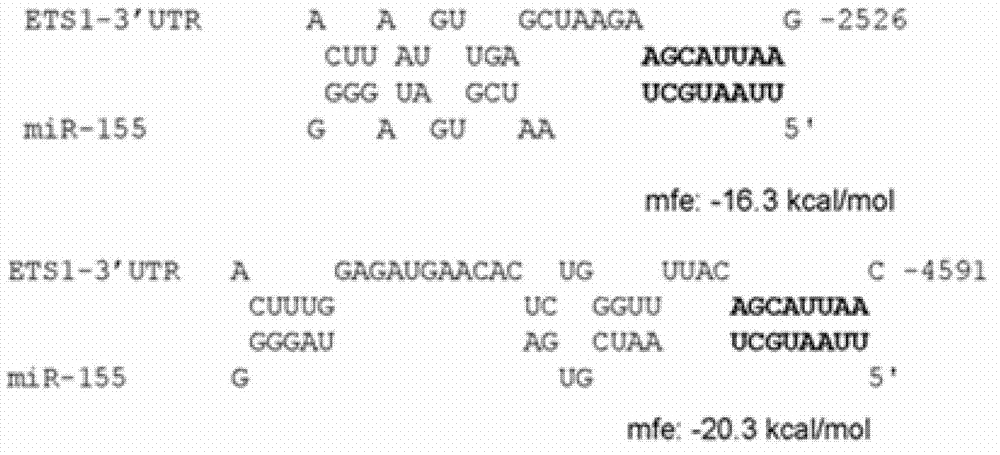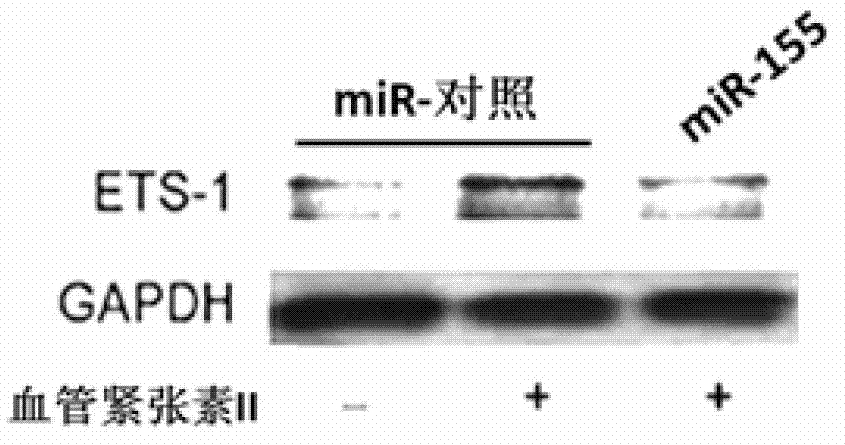miRNA applied method for inhibiting migration of endothelial cell
An endothelial cell, mir-155 technology, applied in the field of applying miRNA to inhibit the migration of endothelial cells in inflammatory state, can solve the problem that the pathogenesis of atherosclerosis is not fully understood, and achieve the effect of preventing cardiovascular disease, low cost, and inhibiting migration.
- Summary
- Abstract
- Description
- Claims
- Application Information
AI Technical Summary
Problems solved by technology
Method used
Image
Examples
Embodiment 1
[0021] 1. Screening method of miR-155 target gene
[0022] Using TargetScan, PicTar and other software to search for possible target genes of miR-155, it was found that the 3'untranslated region (3'UTR) of the ETS-1 gene contained two miR-155 target sites (attached figure 1 ). ETS-1 related to endothelial cell inflammation was selected as a candidate gene.
[0023] 2. Reporter gene validation of ETS-1 as a target gene of miR-155
[0024] Construct pGL3-ETS1-3'UTR recombinant plasmid, co-transfect tool cell 293T with miR-155 mimic, freeze and thaw cells once 24 hours after transfection, lyse cells with special lysate, 100 μl per well, pipette evenly, and fully lyse Samples are available for use. Using Promega’s luciferase detection kit, add 50 μl of LARII and 5 μl of lysate into a 1.5ml centrifuge tube and mix well, then detect firefly luciferase with a microplate reader; add 50 μl of Stop&Glo solution to inactivate firefly luciferase, Renilla luciferase was detected with...
PUM
 Login to View More
Login to View More Abstract
Description
Claims
Application Information
 Login to View More
Login to View More - R&D
- Intellectual Property
- Life Sciences
- Materials
- Tech Scout
- Unparalleled Data Quality
- Higher Quality Content
- 60% Fewer Hallucinations
Browse by: Latest US Patents, China's latest patents, Technical Efficacy Thesaurus, Application Domain, Technology Topic, Popular Technical Reports.
© 2025 PatSnap. All rights reserved.Legal|Privacy policy|Modern Slavery Act Transparency Statement|Sitemap|About US| Contact US: help@patsnap.com



